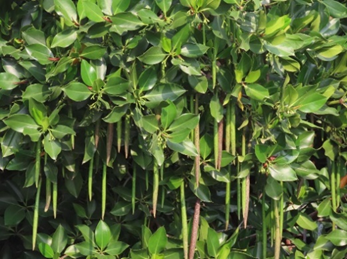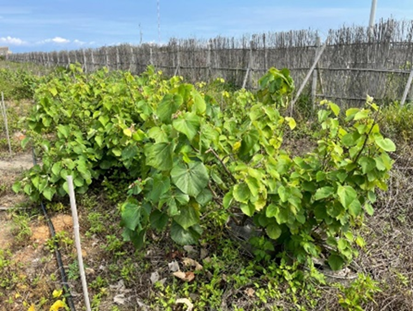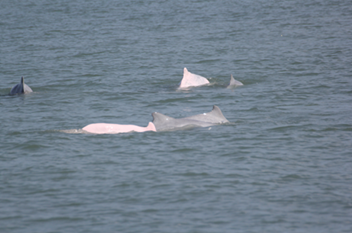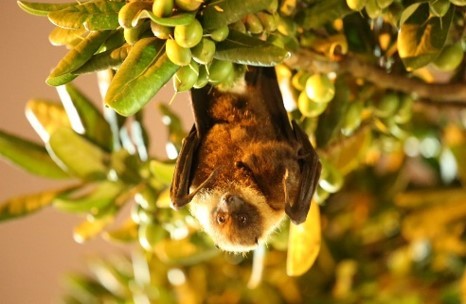Ecological Survey and Inspection
Ecological Survey
Taiwan is rich in marine resources. As a port operator, TIPC places great importance on marine ecological conservation and land environment protection, and is committed to promoting green port environmental protection in line with international shipping trends and government policies. In port construction projects, the company consistently conducts thorough assessments to minimize environmental impacts during development and operations. Continuous monitoring of ecological and habitat conditions ensures that operational activities have no adverse effects on the environment, while promoting the healthy development of marine ecosystems. Following surveys and assessments, the company's operations have been found to have no significant impact on biodiversity and no negative effects on the environment or surrounding species.
.png)
Ecological Conservation Initiatives of Taiwan’s Port Network
Southern Star Wild Bird Habitat Protection Zone
Four wild bird ecological surveys were conducted in 2024, which recorded mostly common resident birds and some common migratory and introduced species, as w ell as four precious and rare conservation species (Grade PII) namely crested serpent eagle, crested honey buzzard, crested goshawk, black-winged kite, and two other conservation-worthy species (Grade PIII), brown shrike and swallow plover.
Ecological Audit
Since most of the port and seawall projects involve changes in coastline and landforms, the design does not only take into account the needs of industrial use, but also plan ecological compensation programs according to different local conditions in order to increase the biodiversity. With reference to the "Operating Manual for Implementation of Directions for Port and Harbor Project Ecological Inspection", each branch should commission professional units (organizations) or experts and scholars to check on whether there is any issue related to ecological environment conservation and to conduct self-assessment in the developed sites or original structures within the area. Information on our company's ecological audit can be found on our official website under 'Ecological Audit'.
Ecological Conservation and Restoration
TIPC is committed to creating a sustainable port and implementing ecological conservation measures that focus on both marine and terrestrial areas. In addition to ensuring the stability of marine ecosystem, the company also strives to create a green environment and enhance biodiversity.
Qilaibi Coast (south side of Qixingtan Beach) on the north side of Hualien Port - Megabats conservation
The megabat is a critically endangered species listed under the Act on Wildlife Conservation. Named for its fox-like face, it is characterized by large eyes and a golden neck, with a body length of approximately 20 centimeters and a wingspan of up to one meter. It is primarily active at night. The main populations are found on Guishan Island, Green Island, and Hualien, with Hualien being the only region on the main island with a stable population estimated at 60–80 individuals, making it the most stable in terms of numbers. Currently, their primary habitats include the Meilun Riverside near Hualien Port, Beibin Park, and Hualien City Green Tunnel.
In order to fulfill corporate social responsibility and promote ESG governance policies, TIPC has designated a 0.63-hectare corridor along the Qilaibi scenic area north side of Hualien Port (south side of Qixingtan Beach) as a megabat sanctuary. By the end of 2024, the area will be planted with edible plants, including Taiwan nato tree, tamanu tree, Hauili fig tree, Fukugi, and Indian almond, which serve as food and nesting sites for megabats. In the future, our company will further discuss with Hualien County Government and Hualien branch of Forestry and Nature Conservation Agency to organize a tree-planting event, demonstrating its commitment to megabat conservation and rehabilitation.
Anping Port - Mangrove Forest Reserve
Mangrove forests serve multiple functions, including windbreak protection, embankment reinforcement, pollution control, ecological conservation, education, and economic development. To prevent the development of Anping Port from destroying the existing mangrove forest habitat, TIPC, rooted in the principles of environmental protection and sustainable ecological conservation, TIPC implemented an ecological transplantation and restoration project in the mangrove reserve along Jiankang Road from June 1998 to September 2004. The reserve covers an area of approximately 4.6 hectares and features a picturesque waterfront forest landscape. TIPC continuously conducts environmental cleanup and maintenance work, and by now, the mangrove reserve at Anping Port has become one of the most comprehensively protected restoration areas in Taiwan.
To preserve the restoration outcomes, Anping Port regularly monitors the mangrove reserve on Jiankang Road, with inspections conducted twice a year during the spring and autumn seasons. Surveys within the reserve have identified various endangered and vulnerable plant species, such as portia, spotted mangroves, agarwood, and white-flowered black mangrove trees, with all plants demonstrating healthy growth.

Taichung Branch - Forestation project in collaboration with Tse-Xin Organic Agriculture Foundation
From 2020 to 2024, Taichung branch has been collaborating with Tse-Xin Organic Agriculture Foundation on a forestation project to plant 35,000 casuarina, hibiscus, willow, and sea hibiscus trees in a protective forest of Taichung Port, covering an area of approximately 20.7 hectares.

Taichung Port Marine Area - Ecological Environment Survey and Conservation Plan for the Indo-Pacific Humpback Dolphin Population
In line with global port development trends, Taichung Port commits to maintaining high-quality port facilities and promoting green port development. The port has conducted ecological and environmental surveys of the Indo-Pacific Humpback Dolphin population in the waters, and commissioned Professor Pey-Yi Lee from National Taiwan Ocean University (NTOU) to conduct marine and land-based observations of the dolphins, Professor Kwang-Tsao Shao to conduct a diet survey, and Professor Chi-Fang Chen to conduct an underwater acoustic survey. The survey results revealed that Taichung Port is a migration route for white dolphins, with the dolphins exhibiting more foraging behavior, such as exploring the environment and searching for prey locations, in the estuary. The Dadu River Mouth and the southern coastal waters along the survey line showed higher white dolphin prey catches, and acoustic monitoring analysis suggested that the southern waters of Taichung Port are fishing area for white dolphins.

Green Belt Replanting and Ecological Tidal Pool
By 2024, the green belt area across all port zones has reached 773 hectares, accounting for 12.69% of the total port area. As part of efforts to preserve green landscapes within port areas, a total of 73,496 trees were planted or replaced in 2024, with regular tree pruning and weed removal exercises conducted to maintain the aesthetic and ecological integrity.
Since 2017, Keelung Port has established a 200-meter-wide green belt along the outer embankment and planted a 150-meter-wide strip of windbreak forest within the 48-hectare land reclamation area of the first phase of the Taipei Port Logistics and Warehousing Zone, covering an area of approximately 19 hectares. In the subsequent three phases of the land reclamation project, a similar 200-meter-wide green belt will be set up along the outer dike. In addition to the 150-meter-wide windbreak forest, ecological tidal pools will be introduced (expected to be completed by 2025) (scheduled for construction in 2027) to promote ecological diversity.
Taipei Port Logistics and Warehousing Area Ecological Tidal Pool
An ecological tidal pool is formed naturally in the windbreak forest outside the warehouse area without any artificial stocking or placement. Four outlets are reserved in the embankment caissons for seawater exchange. The elevation of the tidal pool is designed to take into account the average daily tidal range of approximately 2 meters at Taipei Port. During high tide, organisms stay or forage in the tidal pool, and retain them in the tidal pool during low tide, keeping the pool water-filled even during low tide. This creates diverse ecological effects within the tidal pool and effectively utilizes the interplay between marine characteristics and structural elements to establish a foundational habitat for marine species, thereby attracting marine organisms to the ecological tidal pool.
- Effectiveness/benefits
- Creating harmonious coexistence with marine ecology and providing opportunities for water recreation for the public.
- Maintaining biodiversity and creating a diverse ecological effect.
- Reducing the ecological impact caused by land reclamation.
- Execution time/schedule
Start construction in 2027; estimated completion in 2029 (estimated budget of NT$80,000,000)
